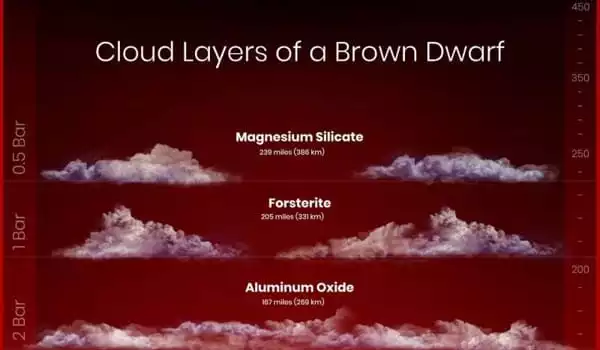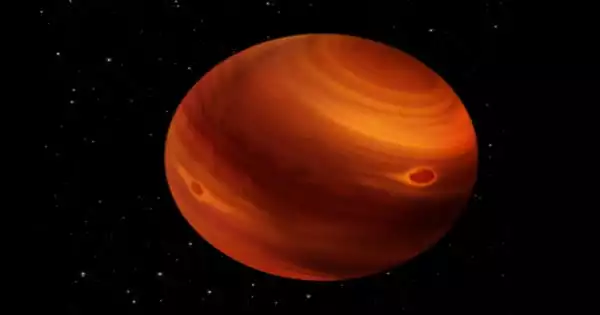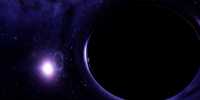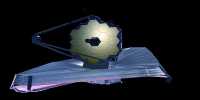Astronomers have devised a new method for capturing all of the intricate ‘layer-cake’ details of a brown dwarf’s cloud structure. Because brown dwarfs are similar to super-Jupiter, this novel technique can help scientists learn more about the atmospheres of giant alien worlds that are larger than Jupiter.
Hawaii’s Maunakea – Jupiter may be the bully planet of our solar system because it is the largest, but it is a dwarf in comparison to many of the giant planets found around other stars. These alien worlds, known as super-Jupiter, can weigh up to 13 times the mass of Jupiter. Astronomers have studied the composition of some of these monsters, but studying their atmospheres in detail has been difficult because these gas giants get lost in the glare of their parent stars.
Researchers, on the other hand, have a substitute: the atmospheres of brown dwarfs, so-called failed stars that can be up to 80 times the mass of Jupiter. These massive objects, like stars, form from a collapsing cloud of gas, but lack the mass to become hot enough to sustain nuclear fusion in their cores, which powers stars.
Brown dwarfs, on the other hand, are related to super-Jupiters. Both types of objects are extremely massive and have similar temperatures. They also have complex and varied environments. Astronomers believe that the only difference between them is their pedigree. Super-Jupiters form in the vicinity of stars, whereas brown dwarfs frequently form in isolation.
The researchers studied the colors and brightness variations of the layer-cake cloud structure in the nearby, free-floating brown dwarf known as 2MASS J22081363+2921215 in near-infrared light using an instrument at W. M. Keck Observatory on Maunakea in Hawaii.
Elena Manjavacas
Elena Manjavacas of the Space Telescope Science Institute in Baltimore, Maryland, led a team of astronomers who tested a new method for peering through the cloud layers of these nomadic objects. The researchers studied the colors and brightness variations of the layer-cake cloud structure in the nearby, free-floating brown dwarf known as 2MASS J22081363+2921215 in near-infrared light using an instrument at W. M. Keck Observatory on Maunakea in Hawaii.
The Multi-Object Spectrograph for Infrared Exploration (MOSFIRE) instrument at Keck Observatory also examined the spectral fingerprints of various chemical elements found in clouds and how they change over time. MOSFIRE is being used in this type of study for the first time by astronomers.
These measurements provided Manjavacas with a more detailed view of the brown dwarf’s atmospheric clouds than previous observations of this object. This technique, pioneered by Hubble observations, is difficult for ground-based telescopes to use due to contamination from the Earth’s atmosphere, which absorbs certain infrared wavelengths. The weather influences this absorption rate.

“The only way to do this from the ground is to use Keck’s high-resolution MOSFIRE instrument, which allows us to observe multiple stars simultaneously with our brown dwarf,” said Manjavacas, the study’s lead author and a former staff astronomer at Keck Observatory. “This allows us to compensate for the contamination introduced by the Earth’s atmosphere and precisely measure the true signal from the brown dwarf. As a result, these observations demonstrate that MOSFIRE can conduct these types of studies on brown dwarf atmospheres.”
She chose to investigate this particular brown dwarf because it is very young and thus extremely bright. It has not yet cooled down. It has the same mass and temperature as the nearby giant exoplanet Beta Pictoris b, which was discovered in 2008 using near-infrared images taken by the European Southern Observatory’s Very Large Telescope in northern Chile.
“With current technology, we don’t have the ability to analyze the atmosphere of Beta Pictoris b in detail,” Manjavacas said. “So we’re using our study of this brown dwarf’s atmosphere as a proxy to get an idea of what the exoplanet’s clouds might look like at various heights of its atmosphere.”
Because both the brown dwarf and Beta Pictoris b are young, they emit a lot of heat in the near-infrared. They are both members of the Beta Pictoris moving group, a group of stars and sub-stellar objects that share a common origin and motion through space. The group, which is about 33 million years old, is the closest young star grouping to Earth. It is approximately 115 light-years away.
Brown dwarfs, while cooler than true stars, are still extremely hot. Manjavacas’ brown dwarf is a scorching 2,780 degrees Fahrenheit (1,527 degrees Celsius). The massive object is roughly 12 times heavier than Jupiter. It spins incredibly fast as a young body, completing a rotation every 3.5 hours, compared to Jupiter’s 10-hour rotation period. As a result, clouds whip around the planet, creating a dynamic, turbulent atmosphere.
The MOSFIRE instrument at Keck Observatory observed the brown dwarf for 2.5 hours, observing how the light filtering up through the atmosphere from the dwarf’s hot interior brightens and dims over time. Bright spots on the rotating object indicate areas where researchers can see deeper into the atmosphere and where it is hotter. Astronomers can see deeper into the atmosphere using infrared wavelengths. According to the observations, the brown dwarf has a mottled atmosphere with scattered clouds. Close inspection reveals that the planet resembles a carved Halloween pumpkin, with light escaping from its hot interior.
Its spectrum reveals hot sand grains clouds and other exotic elements. The upper atmosphere of the object is traced using potassium iodide, which also includes magnesium silicate clouds. A layer of sodium iodide and magnesium silicate clouds descends into the atmosphere. Aluminum oxide clouds make up the final layer. The total depth of the atmosphere is 446 miles (718 kilometers). According to Manjavacas, the elements discovered are typical of the composition of brown dwarf atmospheres. Her team and she used computer models of brown dwarf atmospheres to figure out where the chemical compounds were in each cloud layer.
Manjavacas intends to use Keck Observatory’s MOSFIRE to study other brown dwarf atmospheres and compare them to those of gas giants. Future telescopes, such as NASA’s James Webb Space Telescope, an infrared observatory set to launch later this year, will reveal even more about the atmosphere of a brown dwarf.
“JWST will provide us with the structure of the entire atmosphere, covering more ground than any other telescope,” Manjavacas said. She hopes to use MOSFIRE in conjunction with JWST to sample a diverse range of brown dwarfs and gain a better understanding of brown dwarfs and giant planets.















